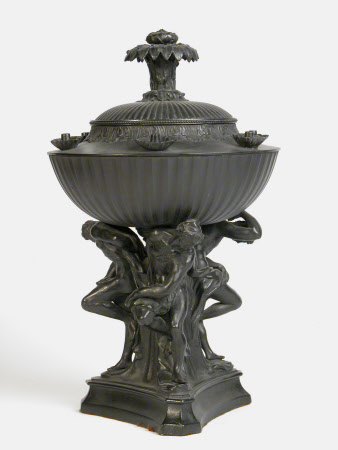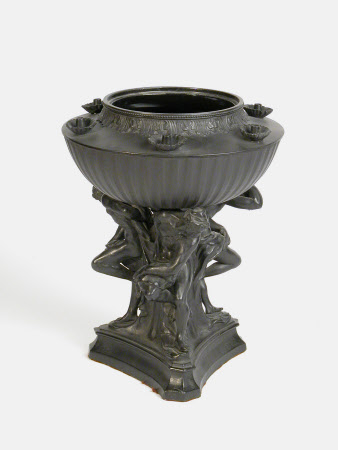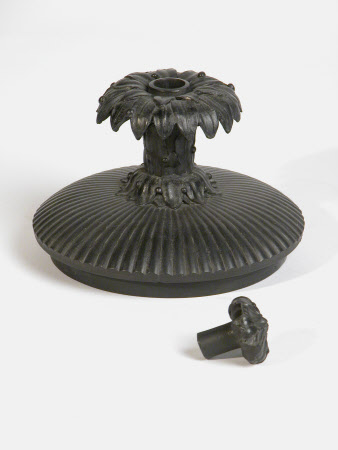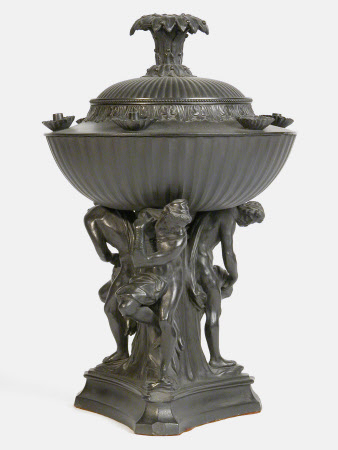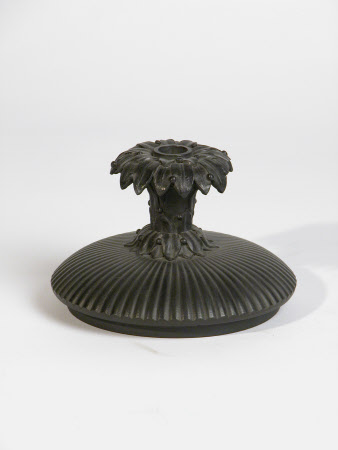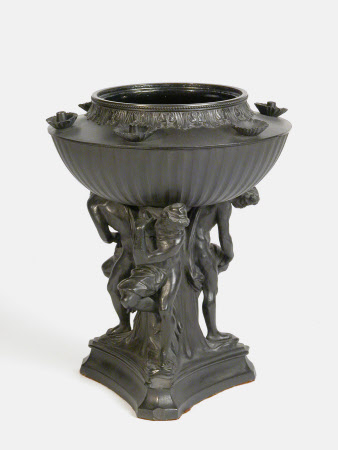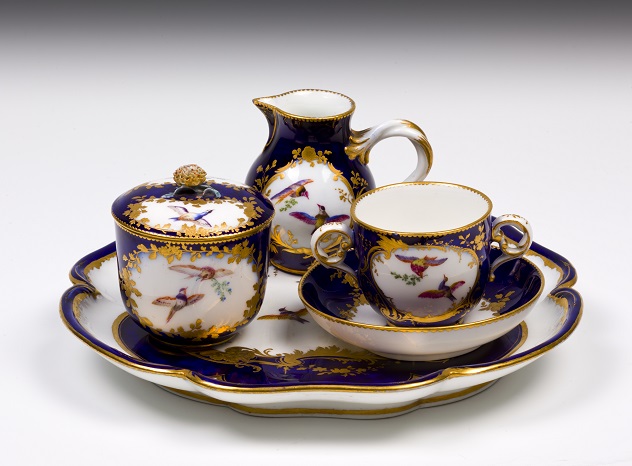Oil lamp
attributed to Wedgwood
Category
Ceramics
Date
c. 1772
Materials
Basaltware
Place of origin
England
Order this imageCollection
Saltram, Devon
NT 870771
Summary
A pair of ‘Michaelangelo’ oil lamps and covers, black basalt, tripod base with three male caryatid figures supporting a bowl, at the shoulder six inverted flower-like cups with central nozzles for wicks, domed cover with palmette knop and removable stopper, Wedgwood & Bentley, Etruria, Staffordshire, c.1772, unmarked; the bowl and cover with engine turned fluting, moulded band of acanthus and tongue pattern at the neck, band of plain beading at rim.
Full description
As early as 1773 the entrepreneurial Staffordshire-based partnership of Wedgwood and Bentley introduced catalogues to market its innovative ornamental wares. Divided into sections based on use or material, they offered advice on appropriate places for display. The section on lamps noted: ‘They bear the Flame perfectly well, and are fit for Chambers, Halls, Stair-Cases, &c. The Tripod Lamps with several Lights, are highly enriched, and will be suitable Ornaments for the finest Apartments. The Prices of the Lamps are from Two Shillings a Piece to Eight Guineas’. Of these tripod lamps, Shape no. 180, now known as the ‘Michelangelo’ lamp, was extremely popular. This pair in black basalt is at Saltram, Devon, and another pair is at Stourhead, Wiltshire. At The Vyne, Hampshire, there is a single lamp, along with a rare black basalt model after a gilt-metal tripod perfume burner of around 1760 designed by James ‘Athenian’ Stuart (NT 718620). The engine-turned fluted bowl of the ‘Michelangelo’ lamp, inspired by Hellenistic bronze hanging oil lamps, was filled with costly spermaceti (whale oil), replaced from the 1780s by colza (vegetable) oil. A flat wick of woven cotton was threaded down each of the six nozzles on the shoulder into the oil. When lit the wicks provided illumination through capillary action. The oil was topped up through an opening in the palm-finial, plugged by a stopper. The bowl is supported on three male slaves, after an engraving entitled ‘Persians and Caryatides’ in Sir William Chambers’s ‘A Treatise on Civil Architecture’ (1759), copied from the base of an altar garniture at the time attributed to Michelangelo, but now identified as having been made in about 1581–2 by the Italian goldsmith Antonio Gentili da Faenza. John Flaxman (1726–1803), father of the sculptor of the same name, probably supplied the plaster figural moulds to Wedgwood. One of the Saltram lamps was acquired shortly before 6 March 1772, when Theresa Parker wrote to her brother, ‘We have just bought a beautiful Lamp of the Black Staffordshire ware’. She may have begun with one as a sample, which was not uncommon. On 27 March 1772, the cash accounts of her husband, John Parker, record ‘to Wedgewood for Black Staffordshire Ware 14 gns’, sufficient to cover the price of a pair. In the same month, the Parkers cancelled an order for four of Matthew Boulton’s ‘Persian’ candle vases, purchasing instead four of his six-branch Derbyshire fluorspar and ormolu King’s Vase Candelabra for £126 7s. In April, Mrs Parker wrote to her younger brother: ‘I was at the Exhibition of Or Moulu, this week, there are some new things, but nothing that I wish’d much to have, being satisfied with four of those Urns you bespoke for lighting the Great Room. I think upon the whole Wedgewood beats them in taste but perhaps it may be owing to his material, admitting to be better executed, particularly with respect to Figures’.
Provenance
Accepted in part payment of death duties by HM Treasury from the executors of Edmund Robert Parker,4th Earl of Morley (1877-1951) and transferred to NT in 1957.
Makers and roles
attributed to Wedgwood, manufacturer
References
Ferguson 2016: Patricia F. Ferguson, Ceramics: 400 Years of British Collecting in 100 Masterpieces, Philip Wilson Publishers, 2016, pp. 134-5. Robin Reilly, 1995, Wedgwood The New Illustrated Dictionary,, p.281 Mallet 1966: J. V. G.Mallet, 'Wedgwood’s early vases: the collection at Saltram House, Devon', Country Life, 9 June 1966, pp.1480-2. Montagu 1954: Jennifer Montagu, ‘A Renaissance Work Copied by Wedgwood’, Journal of the Warburg & Courtauld Institute, Vol 17, 1954. 380-81.
